AEG UltraMix Stand Mixer Review
Competition within stand mixers is fierce. Our best in class has always stood to be the KitchenAid Artisan. But this is the AEG UltraMix Mixer, aimed straight at the wandering KitchenAid buyer. It has a solid metal body, a claim of mighty performance, and tool compatibility (we self discovered) with the aforementioned market leader. Not to neglect to highlight the importance of a £349 price tag - yes £75 cheaper than the KitchenAid Artisan.
Design
AEG have clearly done their homework. The beautiful alpha bronze (KM4900) die-cast metal body with stainless steel accents is durable and pleasing on the eye! We’ve used the Kenwood and KitchenAid mixers of this world and can say that the UltraMix’s design can stand proudly next to them as a joyous possession for a modern baker. The 360cm x 370cm x 210cm is 2cm shorter than the KitchenAid Artisan but won’t deflect from being a spectacle on any kitchen countertop and may just make it a bit of easier to tuck under or in cupboards. One of our favourite things about the design is that its exterior glossiness makes left behind grease, cookie dough and pancake mix a 'wipe away in two passes' affair.
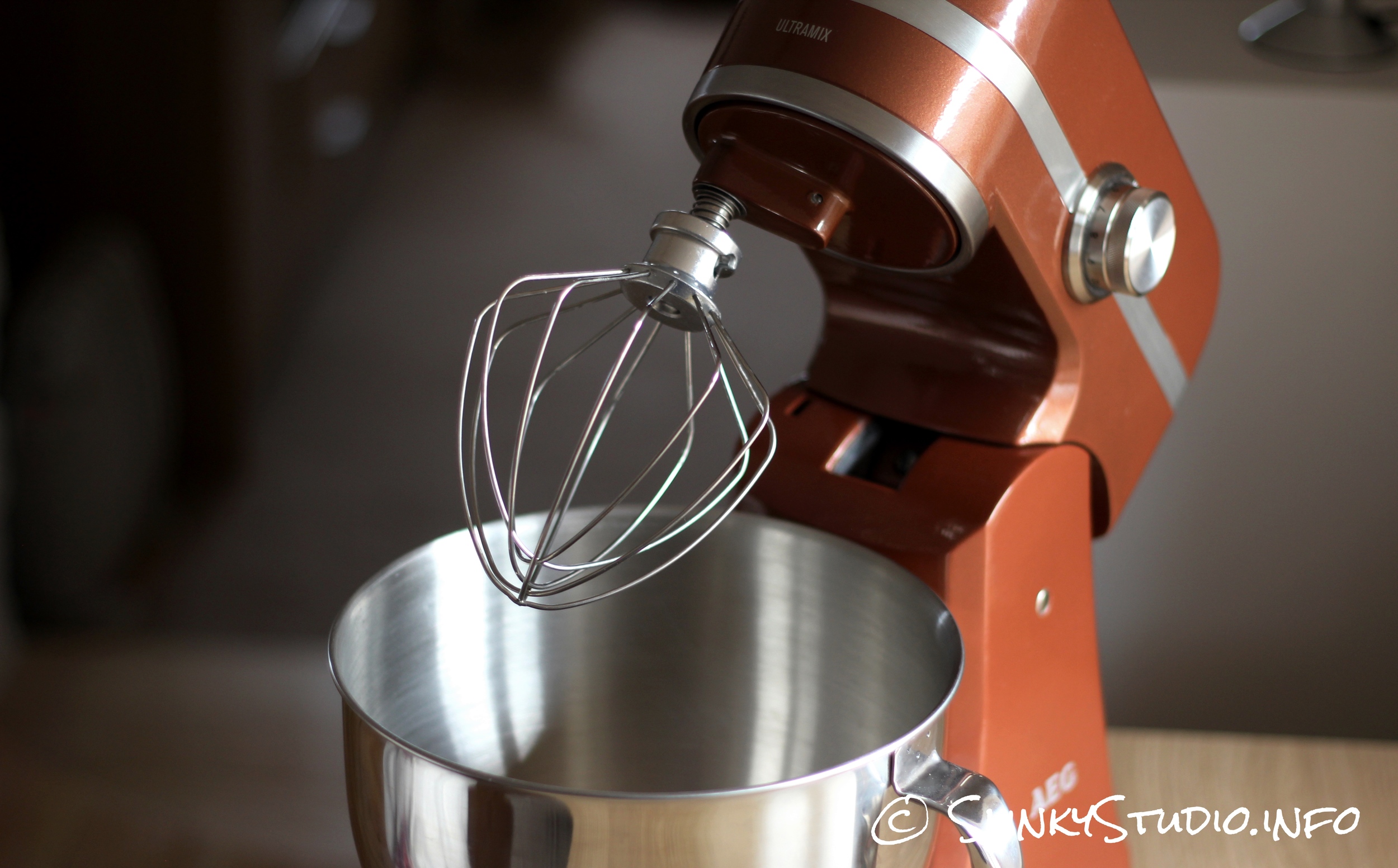
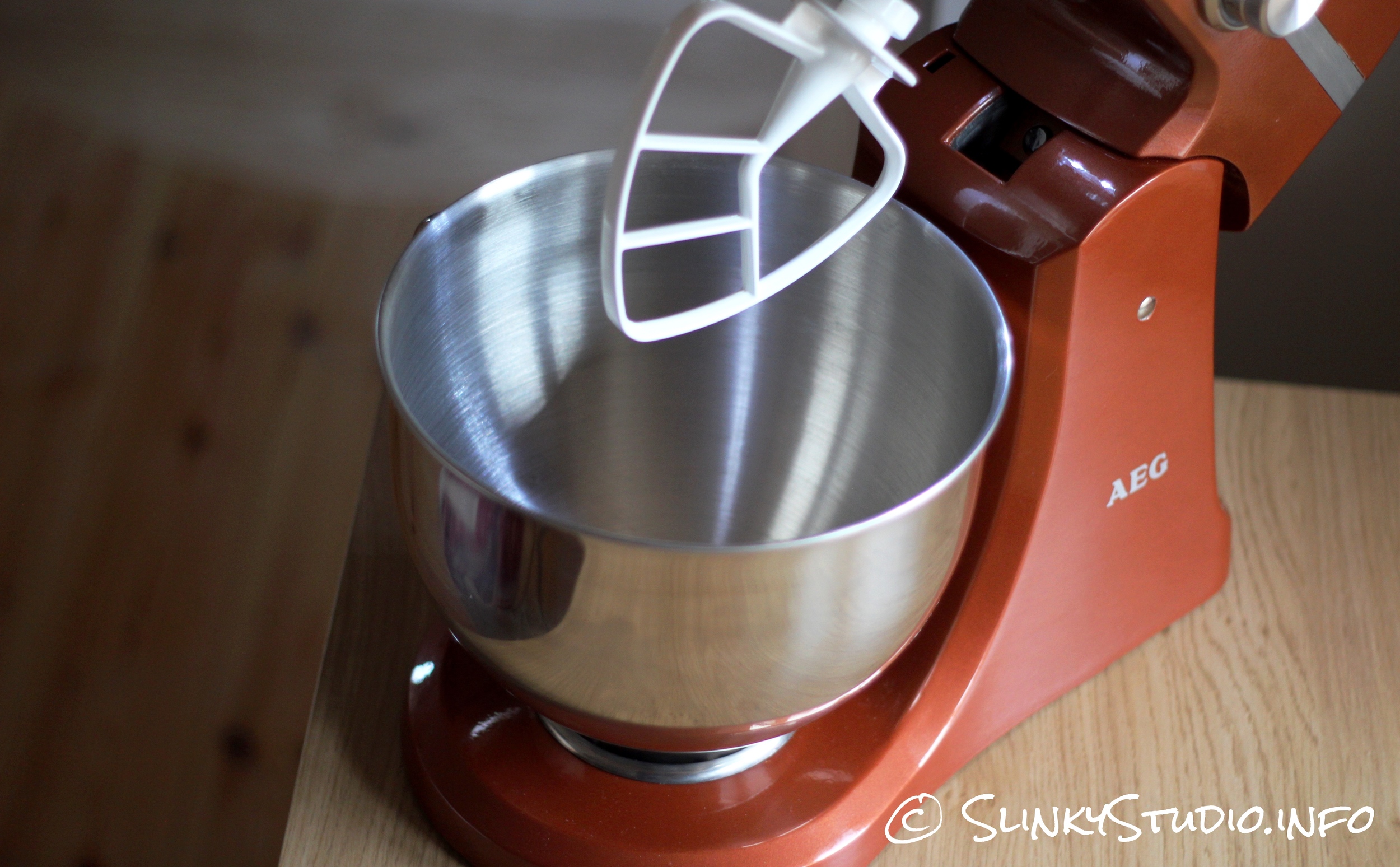
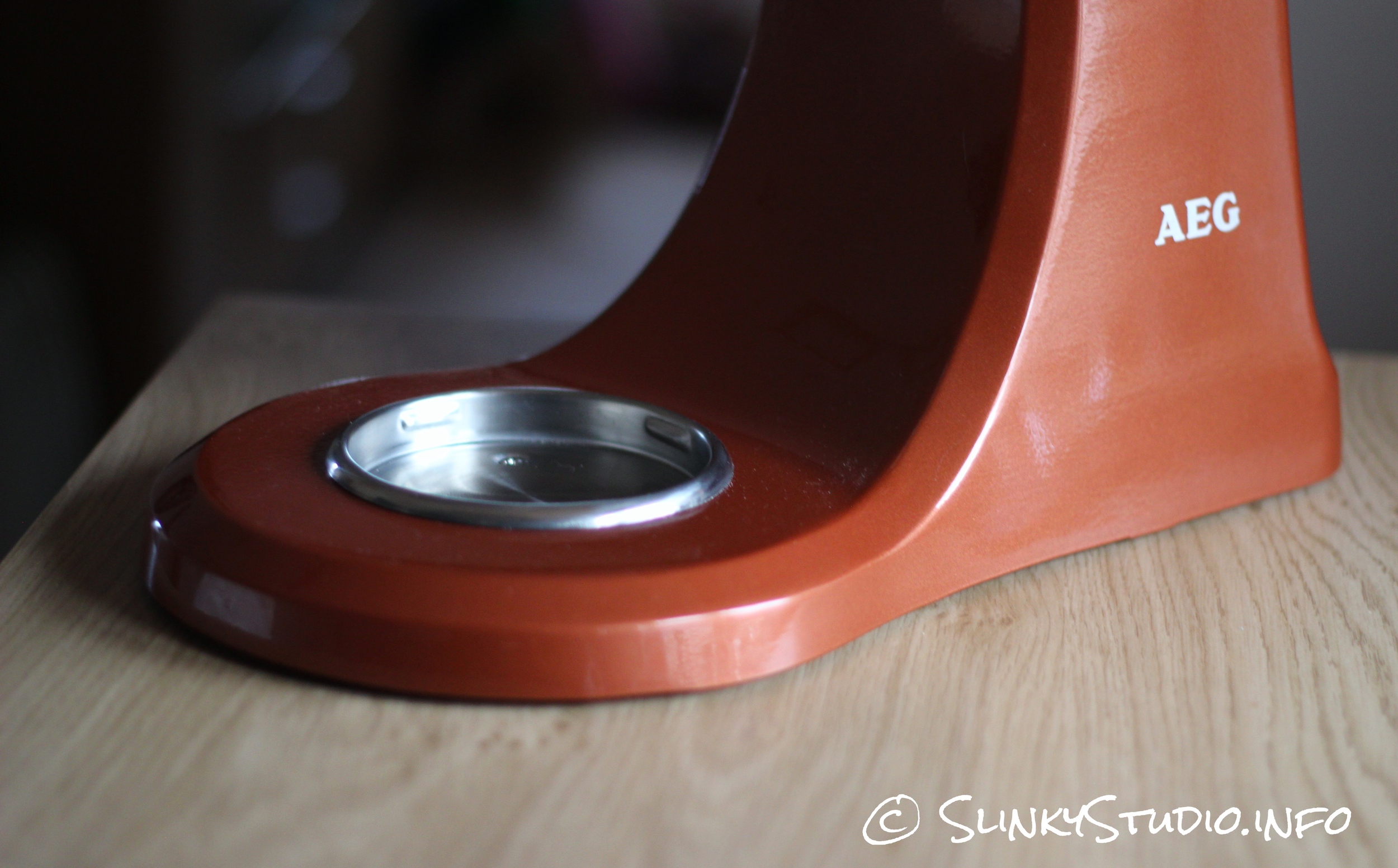
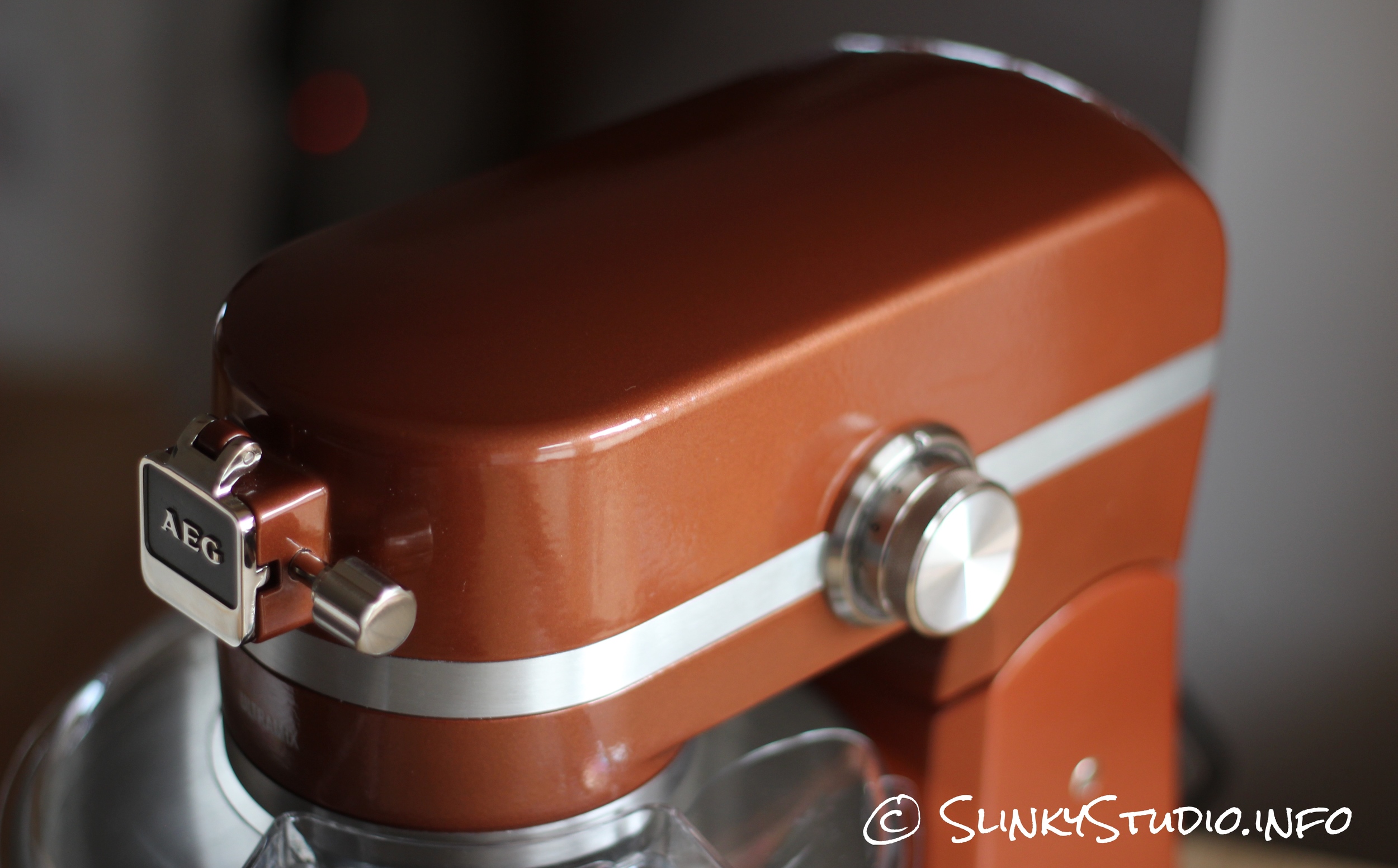
The mechanism to lift the mixer head is lighter than the KitchenAid Artisan to operate and the bowls are equally as easy to lock/unlock from the base. One novel design inclusion that we were unaware of before switching it on is the integrated LED lighting to illuminate the bowl's contents.
Controls
On the left we have the spring loaded lock mechanism switch, straightforward and not cumbersome to use. On the right we find the 10 variable speed settings controlled by a twist dial which is a very satisfyingly relaxed input method and has integrated blue LED lighting. Furthermore, if you accidentally load the mixer bowl up with dry ingredients and go from speed setting 1 to 6 with no splashguard equipped (we’ve all done it!) - you can cancel the input by reverting the speed back because the interface has a small amount of time delay.
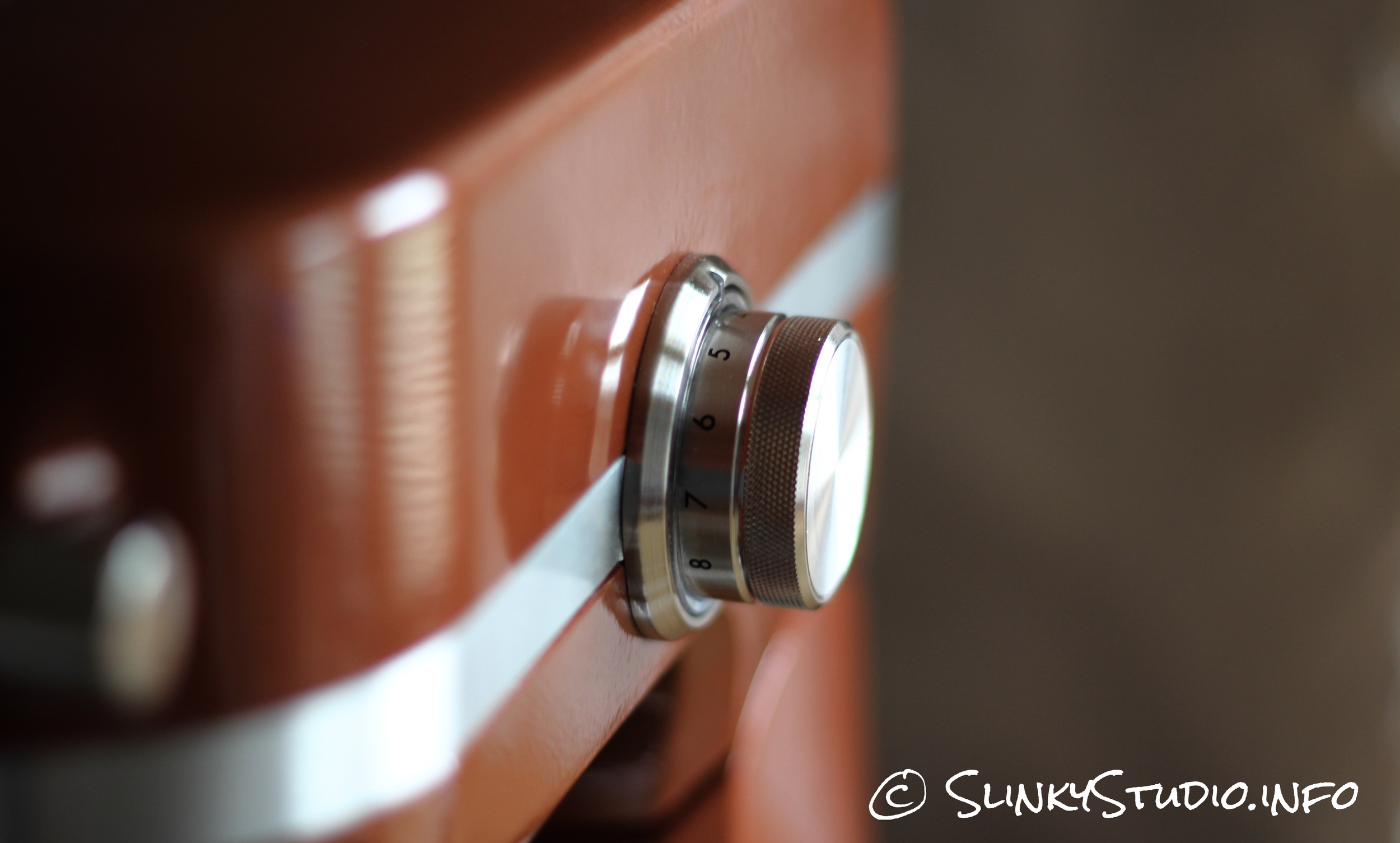
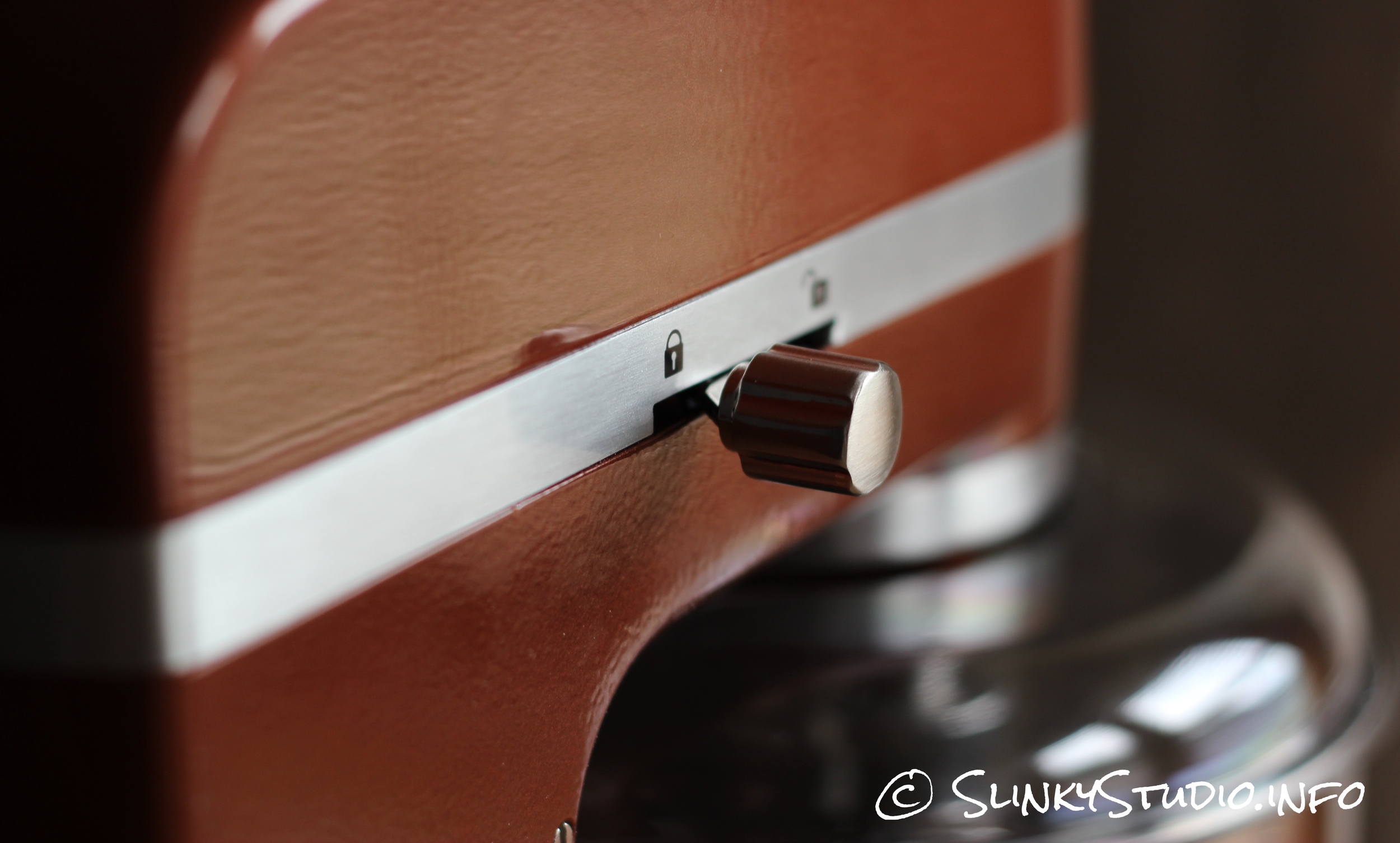
Bowls & Attachments
Upon removal of the attachments from the box, we immediately thought the lock-on method looked almost identical to that of KitchenAid’s push & twist system. After a rapid dash to our KitchenAid to find out, to our disbelief we were correct and all of these AEG attachments are 100% KitchenAid compatible and, of course, vice-versa. Quality of the included attachments are equally as substantial too. On the front of the mixer there is the opportunity to harness the motor to power various accessories - this revealed by opening a metal flap - which again appears to be KitchenAid compatible; but AEG offer their own accessories, like pasta makers, etc., too. Additionally we are greeted with two stainless steel bowls - a 4.8L with handle and 2.9L without handle. The latter is a unique but highly useful standard extra as it allows pleasant mixing of dry and wet ingredients separately.
Where we found an attachment design flaw, however, is with the splashguard. In use with the 2.9L bowl it’s easy to whip on and off, but when using the larger 4.8L bowl, applying and removing the plastic guard is a bit awkward to be honest. The head of the mixer has to be raised slightly to allow it to either be inserted or removed. What makes this task even more tricky is that the attachments jar against it, so the head cannot be lifted fully into the air with the guard equipped. The guard does have an inbuilt chute, so dry and wet ingredients can be poured in and kept from splattering all over your kitchen, but nevertheless the plastic guard was a design inclusion that felt like a bit of an afterthought.
Results
First thing to note is we anticipate that the AEG UltraMix is powered by a belt driven mechanism as opposed to the geared setup within the KitchenAid Artisan mixer. What this basically means is some of the power transferred from motor is lost by the belt, so AEG opt for a 1000W motor to compensate. Raw performance differences between the KitchenAid Artisan (300W) and AEG UltraMix (1000W) are minimal, despite the 700W difference. The strenuous doughs we made as examples below prove this is no doubt a powerful mixer, but one that, when set such strenuous tasks, highlights a loud running noise. To put the volume of noise into context, it’s quite difficult to communicate when in close proximity to it when mixing heavy doughs. With less intensive tasks the UltraMix is somewhat quieter, but it does not achieve the quietness achieved by a geared mixer.
American Pancakes: These are the classically fluffy American pancakes - a fantastic recipe to test whisking abilities. This recipe also exemplifies why two bowls are so handy, as the recipe calls for whisked egg whites which we could do independently in one bowl, and then for a batter that we prepared in another before combining the two together. Egg whites whisked up to our expectations, with plenty of stiff peaks - the air was well and truly locked-in and the task was completed in a zippy 2 minutes on speed setting 10. The LED lighting to illuminate the contents of the bowl is, of course, helpful in a recipe like this. The finished pancakes were fluffy, with dozens of aerated holes - which is a good thing!

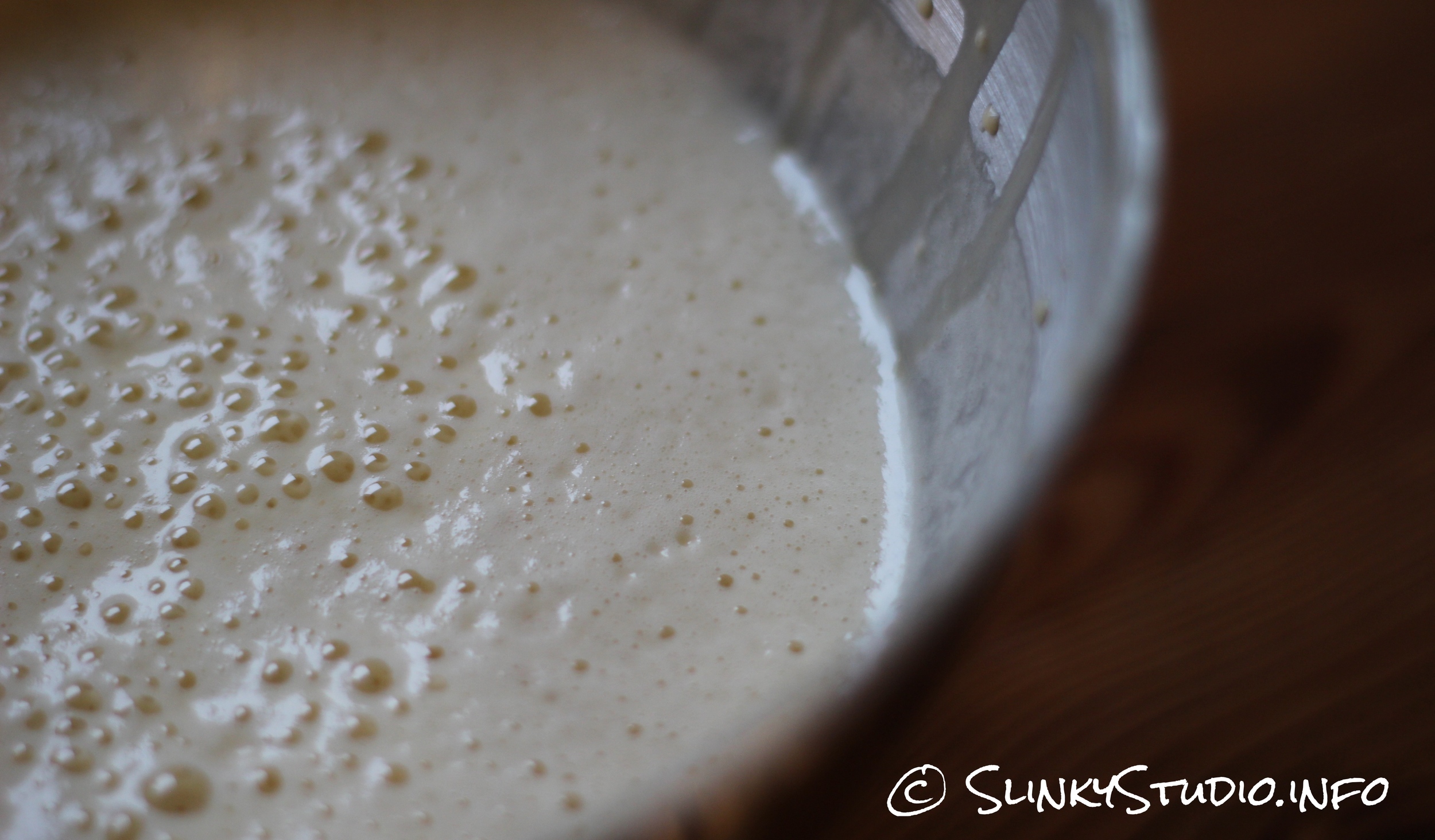
Chewy Chocolate Chip Cookies: An extremely fatty and sugary recipe with huge chunks of chocolate for the metal beater to contend with. The AEG UltraMix did jolt a bit when the chocolate chips were thrown in at the end of the mix, but nevertheless it incorporated all the flour and baking margarine. There were no ingredients left stuck to the sides of the bowls needing to be manually pushed down, and most importantly the sugar wasn't gritty within the mix, but was integrated smoothly by the beater. The baked cookies could only be described as toothsomely rich.

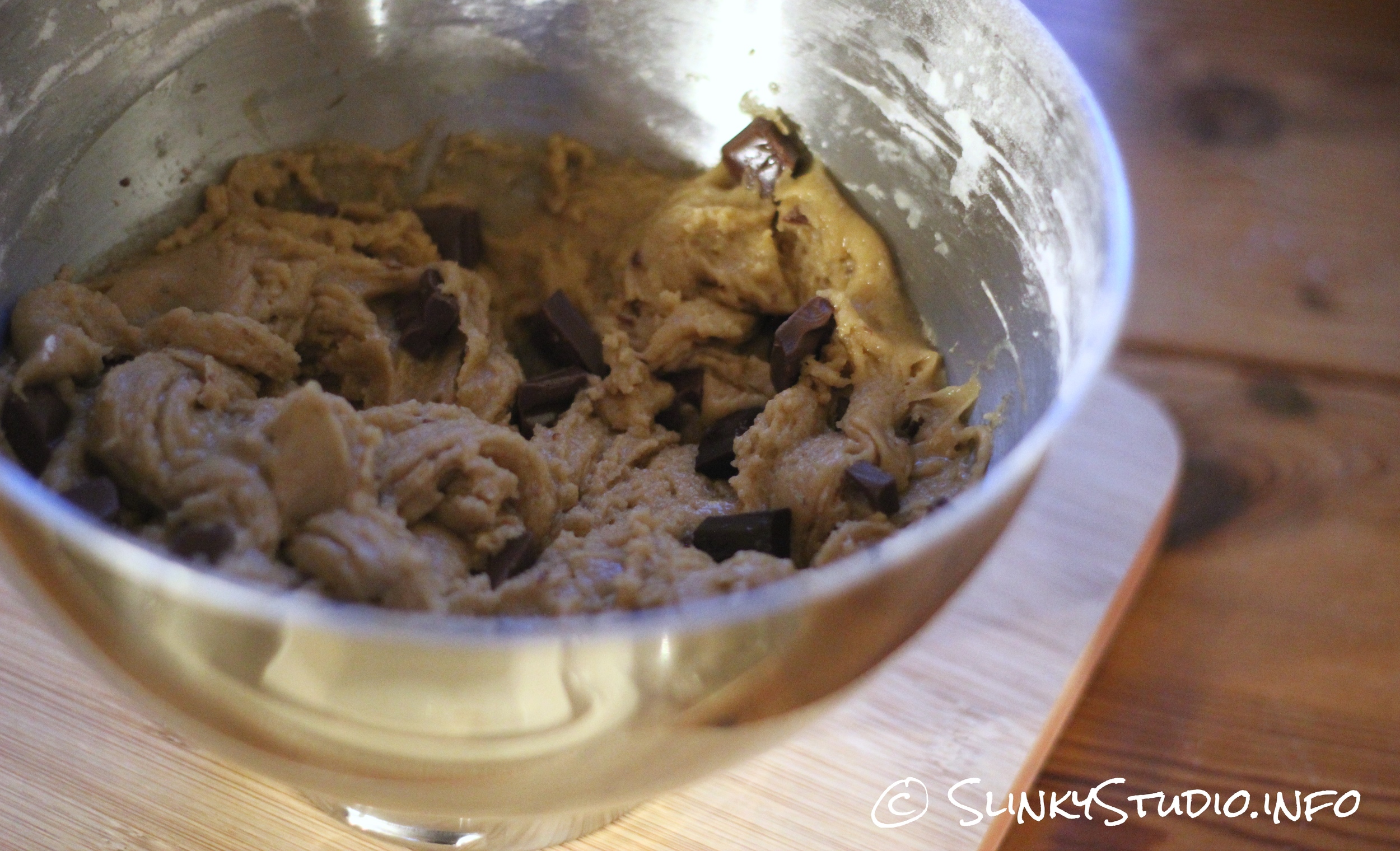
Garlic & Onion Baguettes & White Rolls: We could make two doughs and leave them to rise simultaneously thanks to the 2 supplied bowls. The garlic and onion baguettes were kneaded on speed setting 4 for 15 minutes. This was a tough dough for the machine to contend with, but it didn't move around on the worktop at speed 4, being helped by the 5 rubber feet located on the base. We did boost the speed to setting 9, and whilst the mixer didn’t jar in performance it did jolt around the worktop. An elasticated dough was formed and the finalised bread was an Italian moreish delight. The dough for the rolls was firmer and also formed consistently.
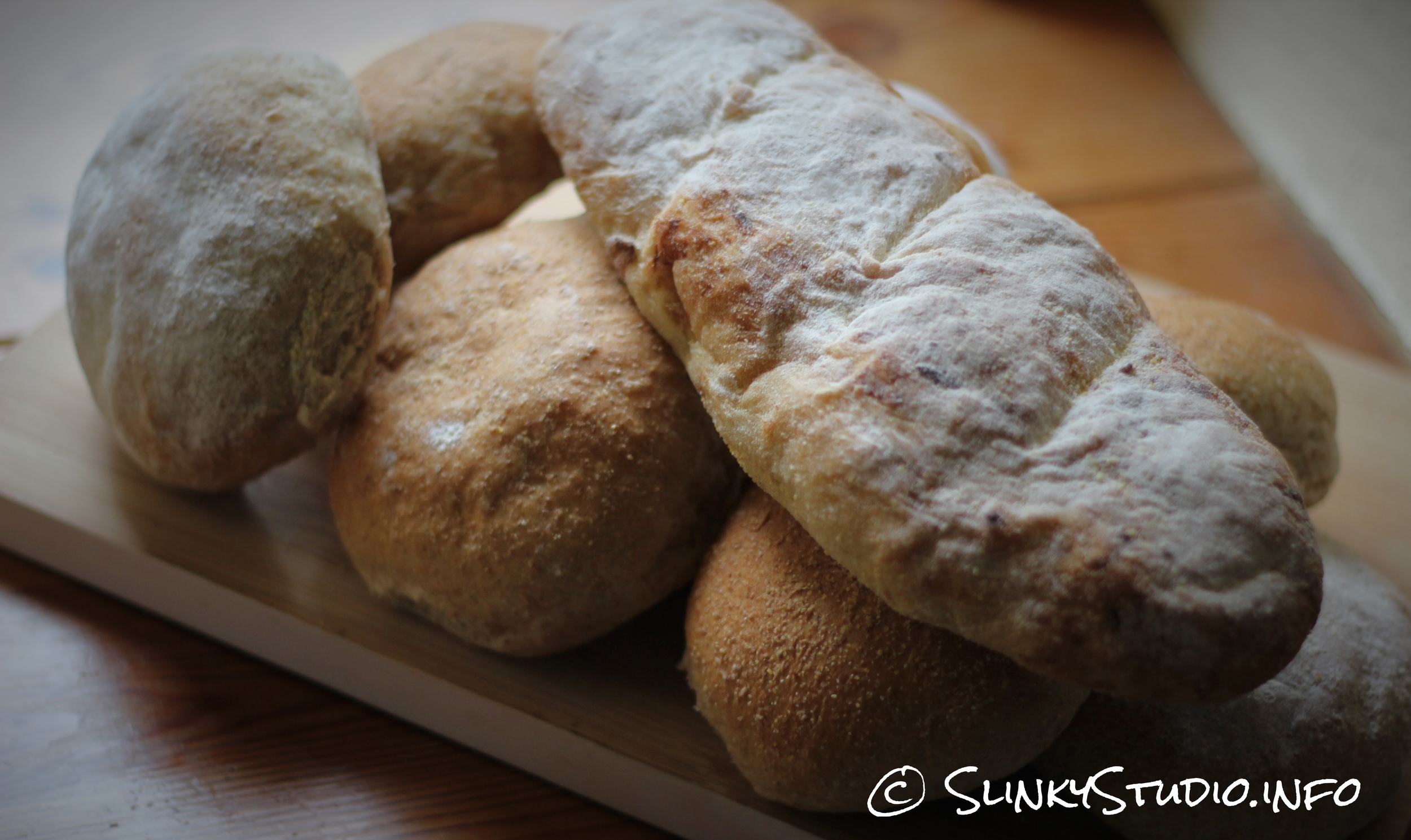
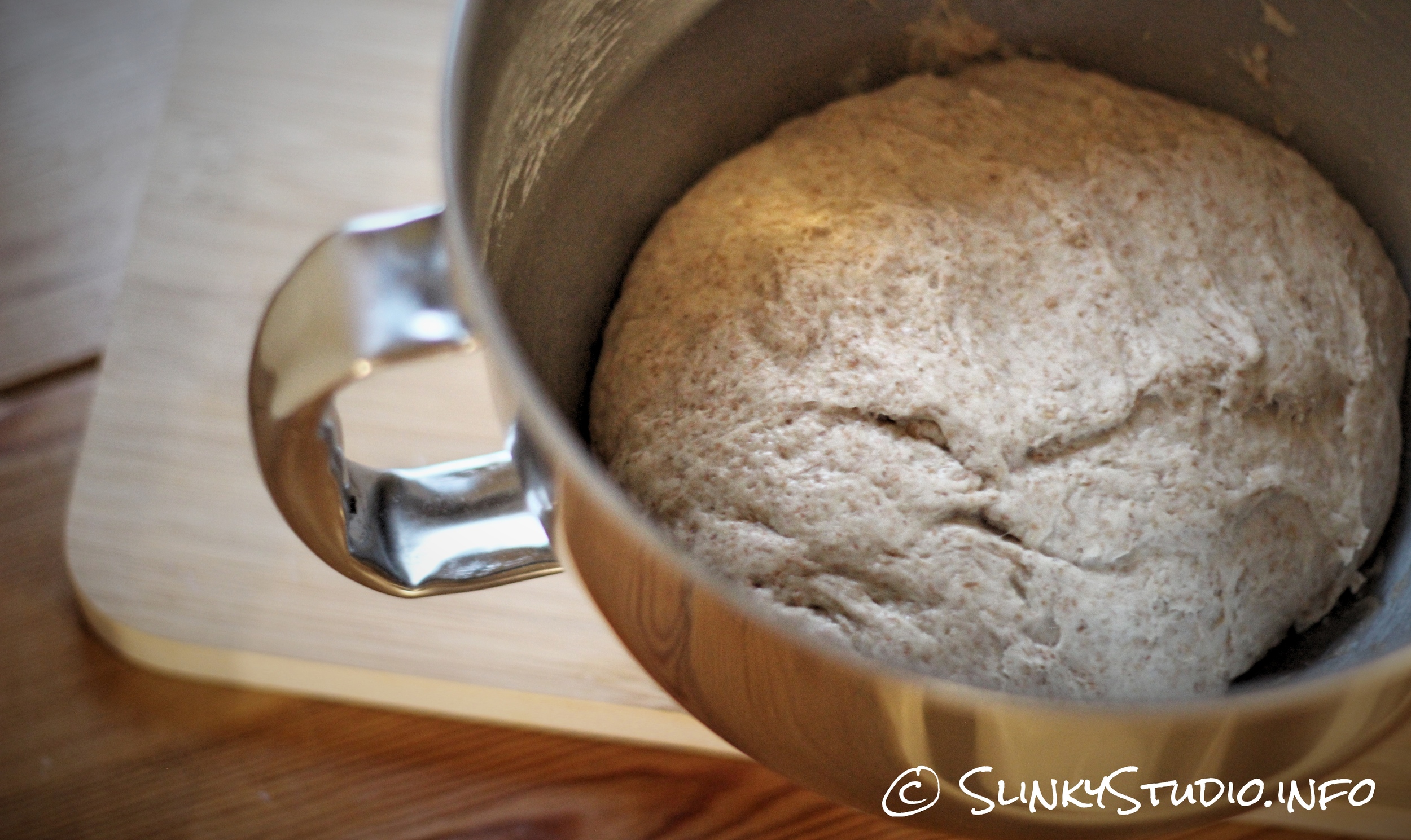
Verdict
AEG have clearly put a lot of thought into the design of the UltraMix stand mixer. We were really impressed by the little useful inclusions like the LED lighting so we can keep a clear eye on the contents of the two bowls, and the controller time delay to prevent accidents. Despite drawbacks, like the cumbersome splashguard and relatively loud noise when mixing strenuous doughs, etc., it is a qualified mixer that competes closely against the KitchenAid Artisan, with its solid die-cast metal body and sublime looks. Plus there's a significant saving of £75 to be had. Buy on Amazon











